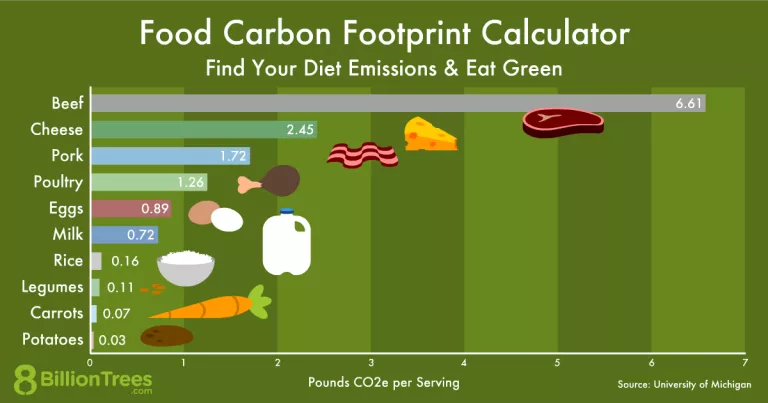By Deborah Williams
Editor’s note: We continue to feature specific climate action ideas, authored by Deborah Williams who is a UCSB lecturer in environmental studies.
Everything we put into our mouth has a carbon emission history. Some foods – like beef and lamb – have an exceptionally large climate change footprint.
To calculate the greenhouse gasses (GHG) associated with the food we eat, there are seven components to consider:
1) land use change including deforestation, 2) methane and carbon dioxide emissions from cow flatulence, rice paddies, farm machinery, etc., 3) animal feed, 4) processing, 5) transport, 6) retail, refrigeration and more and 7) packaging from production to disposal.
To graphically capture the GHG emissions per kilogram (2.2 pounds) of 29 foods, check out this very informative website: https://tinyurl.com/HoldTheBeef
Beef tops the chart at 60 kg CO2 equivalents (CO2e). Lamb is second at 24 kg CO2e. Other foods also have a meaningful carbon footprint, including cheese, chocolate, coffee, farmed prawns, and palm oil, but much less than beef.
Many foods have a very small CO2e equivalent of 1 kg CO2e or less, such as corn, soymilk, peas, root vegetables, citrus fruits and nuts.
An Oxford University study concluded that to help avoid catastrophic climate change, the US and UK need to reduce beef production by 90% and make other changes to our diets and agricultural practices.
Annually, livestock accounts for 14.5% of the world’s greenhouse gasses each year (about the same amount as from cars, trucks, airplanes and ships combined).
We can make a difference by what we eat.
To begin with, we can stop eating—or significantly reduce eating—beef and lamb. Eliminating red meat from our diet is not only good for our climate, but also for our health. A Harvard School of Public Health study found: “Red meat: in addition to raising the risk for colorectal cancer and other health problems, can shorten your life . . . each additional daily serving of red meat increased risk of death by 13%.” In other words, “It appears ‘healthy meat consumption’ has become an oxymoron.”
Beef and other meat also require an astounding amount of water. Only 8 ounces of beef demands over 850 gallons. If all Americans ate meat one less day a week, the water saved would equal the Colorado River’s annual flow.
Also, about 50% of the Earth’s habitable land is devoted to food production. Of that “nearly 80 percent is for grazing livestock,” often after extensive deforestation. This excellent video further explains why beef has such a massive carbon footprint, and the importance of making informed food consumption choices, as does a How to Save a Planet podcast called “What’s the Beef with Beef?”
Somewhat surprisingly, as a recent extensive analysis published in the Journal of Animal Science reveals, conventional feedlot cattle have a lower greenhouse gas footprint than grass fed cattle.
We can also take one or more additional steps in lowering our food carbon footprint by reducing our consumption of cheese, chocolate, coffee, farmed shrimp, palm oil, dairy products and/or pork. A plant-based diet is win-win from so many perspectives.
Finally, we can help reduce the transportation portion of our food’s greenhouse gas emissions by buying locally grown fruits, vegetables, nuts, honey, eggs and more. What’s more, the food is generally fresher, tastier and helps our local economy.
According to ATTRA, fresh US produce travels over 1,500 miles before being consumed. Local is better, and we have great local options in our farmer’s markets and stores in Santa Barbara and Ventura counties.
The bottom line is that we have a choice regarding what we eat and the greenhouse consequences of our food consumption. Fundamentally, we can make choices on a meal-by-meal basis to reduce our carbon footprint, which is empowering.
